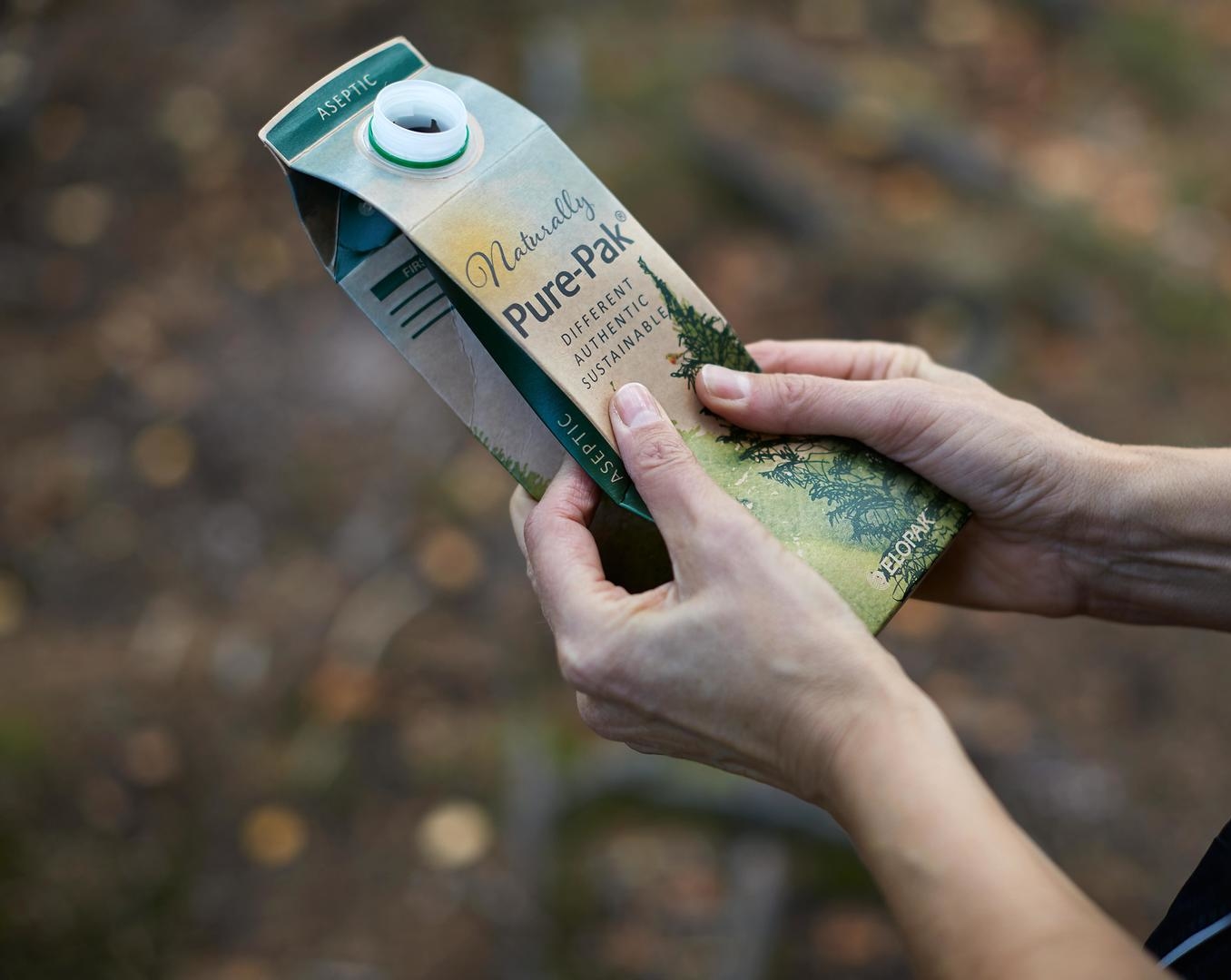Our Planet
Packaging by Nature®
2020 marks the beginning of the climate decade. A decade that is key in terms of turning the tide on global temperature increase. This is the time to move from doing less harm to doing more good. Elopak aims to go Net Zero as a natural continuation of our carbon neutral approach. It’s the natural thing to do.

Renewability
Why is renewability important to Elopak? To us, it is quite simple. We all depend on the world’s natural resources for everything from food to clothes and packaging. Resources come in two types – the ones that can be renewed naturally over time, and the ones which cannot. Since the industrial revolution, humanity has ruthlessly exploited the earth’s resources. By ensuring renewability throughout our operations – from the sourcing of raw materials for our products to the energy we use in our production sites and offices – we can contribute to a more balanced and sustainable future. Renewable raw materials naturally grows back and hence ensures resource availability for future generations. In addition, these materials lead to significantly lower greenhouse gas emissions compared to fossil or other finite resources.
Elopak works to ensure renewability for our energy and our products through a systematic approach in our supply chain through our Global Supplier Code of Conduct and our Raw Material Sourcing Policy. We have also committed through Science Based Targets and our RE100 membership to continue sourcing 100% renewable electricity for all our global operations (Read more here).
The importance of renewability is confirmed by key stakeholders such as NGOs (dialogue with WWF Norway in 2019), our industry associations, our key suppliers as well as key customers.
Naturally renewable material
An Elopak carton comprises of on average of 85% paperboard, all of which is sourced from northern hemisphere forests. Forests are naturally renewable because trees grow without human interference, but can only be truly renewable if they are responsibly managed. Therefore, as our main raw material is derived from forests, we take responsible forest management very seriously.
Read moreRenewable polymers
Our Pure-Pak® cartons keep products fresh whilst using less plastic than alternatives. Elopak strives to reduce the plastic content of cartons. And, our customers can already go ‘fossil-free’ with forest-based polymers.
Read moreNet Zero
What does Net Zero really mean? And why is it so important to Elopak? There is no doubt that global temperatures are rising and has disastrous impacts on the climate. According to IPCC (Intergovernmental Panel on Climate Change), the world must halve CO2 emissions by 2030 and reach net-zero emissions by 2050. This means preventing the accumulation of greenhouse gases in the atmosphere.
Elopak has worked systematically to reduce our greenhouse gas emissions since 2008, and we have reported on our progress every year. In 2019 we formally pledged to cut greenhouse gas emissions with the goal to keep global warming below 1,5 degrees, in line with the criteria set by Science Based Targets initiative. Since 2016, we have been a carbon neutral company, offering carbon neutral packaging to our customers. We could argue that this already makes us net zero, however, engaging in on-going discussions around the net-zero term, we do recognize the need to actively remove greenhouse gases from the atmosphere in addition to reducing the potential for emissions to happen. Therefore, Elopak will aim to become net zero through carbon removals. This is our commitment to the climate.
Elopak’s main source of emissions occur in our supply chain, through our raw materials. This is why we have set ambitious reduction targets, not only for emissions in our own operations (scope 1) but also throughout our supply chain (scope 3).
Our approach is firmly embedded throughout our company through our commitment to the SBT initiative, our RE100 membership and our ambitious sustainability program, as well as our continued reporting in line with the GHG protocol as well as our CDP reporting (read more here).
Multiple stakeholders confirm the importance of climate and emission reductions, which further strengthens our motivation and drive to deliver on our targets.

Building the road to 2030
Elopak has pledged to cut greenhouse gas emissions in line with the strictest criteria set by the Science Based Target Initiative (SBTi), and has by that committed to keep global warming below 1.5°C.
Read moreOur emissions
Climate change is caused by the emission of greenhouse gases in the atmosphere. Since pre-industrial times, human emissions of carbon dioxide (CO₂), nitrous oxide, methane, and others has created a spike of 1° in global temperatures.
Read moreBenefits of cartons
In December 2020 The Alliance for Beverage Cartons and the Environment (ACE) published a report supporting the superior performance of beverage cartons. The report was commissioned by ACE and carried out by Circular Analytics at the University of Applied Sciences Campus Vienna, Austria.
Read moreCarbon Neutral
After years of reducing Elopak’s greenhouse gas emissions by way of energy efficiency and phasing in renewable energy, Elopak opted for a carbon neutral certification to offset remaining emissions, in 2016.
Read moreOur recycling
Made of materials ready for countless new applications, our Pure-Pak® cartons live on after use. At a growing number of recycling sites, the carton’s layers are separated for remanufacturing into new products such a cardboard boxes, furniture and roof tiles.
Read more

Recycled content
Our recycled content
One of the key topics raised by stakeholders these days is circular economy. No doubt there is a push in the market to replace virgin materials with recycled ones in an attempt to move from the linear “take-make-dispose” culture to the infinitely circular society where no new materials are needed.
It seems almost like a dream, and certainly, there are many important elements to consider before moving towards recycled content in food packaging.
Read more